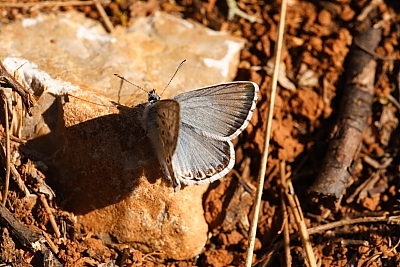
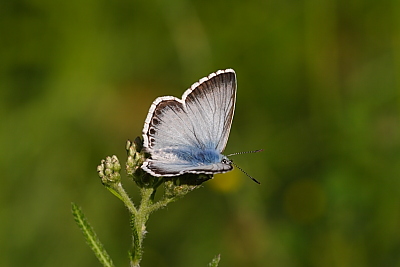
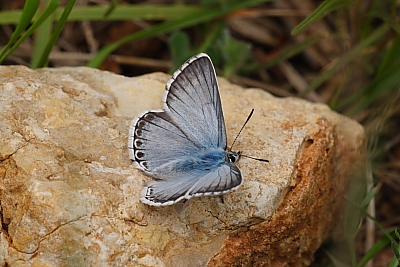
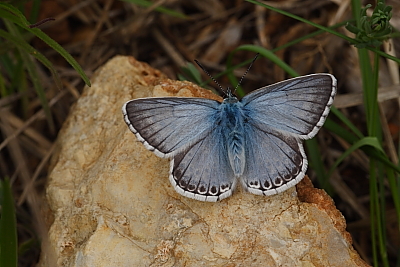
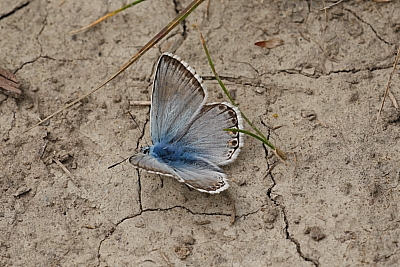
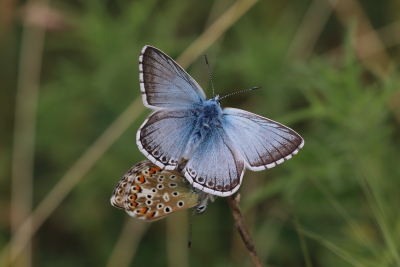
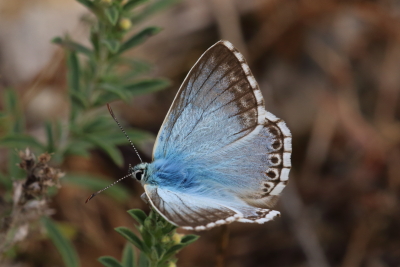
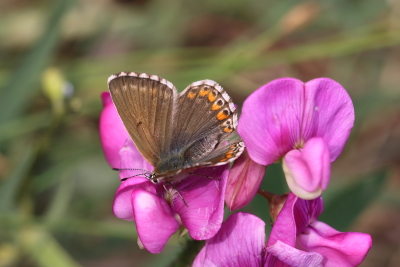
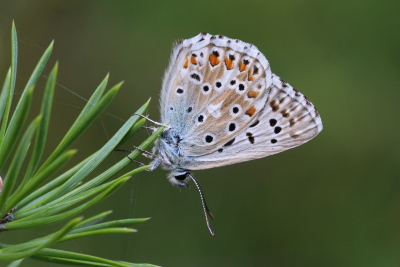
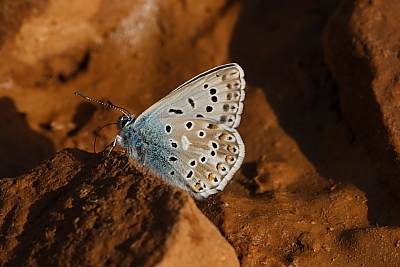
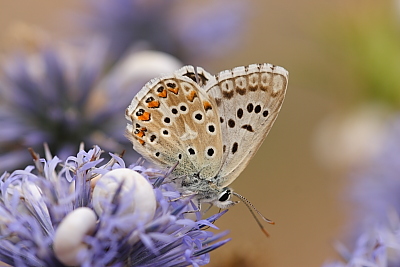
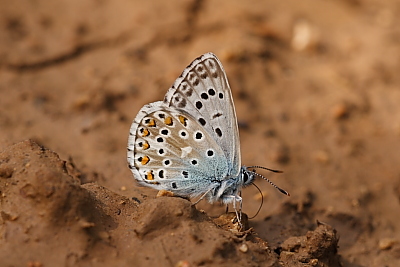
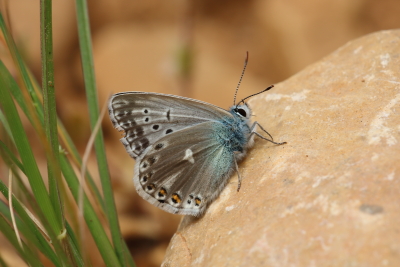
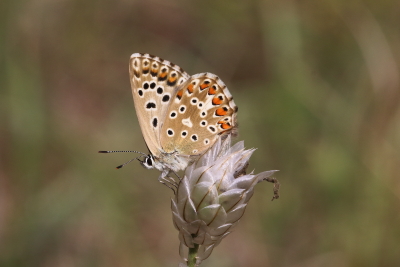
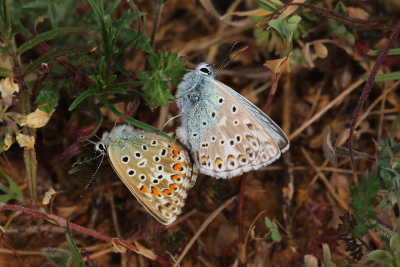
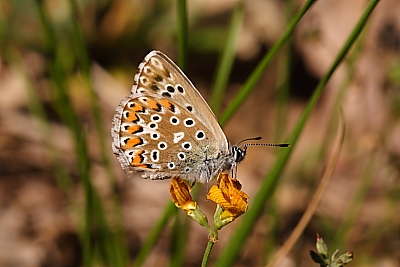
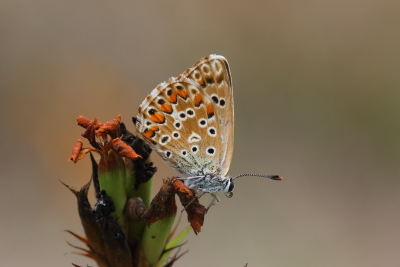
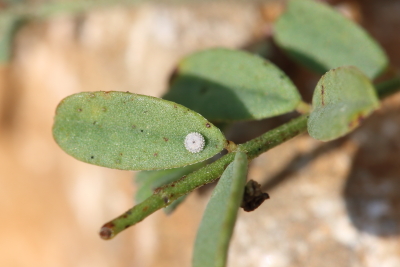
Provence Chalk-hill Blue (Polyommatus hispanus)
2024 photographs highlighted in yellow. Click on any photograph to go to an enlarged picture, or simply scroll down the page.
|
Hispanus is similar to the Chalk-hill Blue (P. coridon), the differences being described on the coridon page. It is double brooded, the first brood emerging from late April, and the second brood may be on the wing until well into October. It is widespread and often very common in Provence. |
This species was previously known as Lysandra hispana. In 2010 it was reclassified as Polyommatus hispanus and in 2017 it was again reclassified back to Lysandra hispana. I'll give it a few years before changing the web page (and all the occurrences and links associated) as it is entirely possible that the taxonomists will change it again. |
| ref | sex |
observations |
alt. m |
| 10173 | M |
a typical male, a distinctly yellow tinge to the blue. |
185 |
| 29739 | M | a fresh male, perhaps slightly bluer than the norm for hispanus. | 220 |
| 34705 | M | a male, perhaps typical of the slightly dulled blue of hispanus. | 185 |
| 34724 | M | a male, the same individual as 34705, but a shot taken of both wings to give a different perspective, often difficult with a macro lens with limited depth of field. | 185 |
| 37482 | M | a male, from the département of the Rhône, which is about the northernmost part of its range. It seems to be a rather duller, yellower, blue colour than those I see in Provence. | 180 |
| 40467 | M | the male of a mating pair, female just visible below. The deeper, dusky colouring is typical of male hispanus from the south of Var. | 220 |
| 50507 | M | a male, quite dark around the post-discal areas. | 780 |
| 40708 | F | a fresh female. | 220 |
| 50526 | M | a male underside, closed up in overcast conditions, perhaps rather lighter colouring than the norm. | 220 |
| 24628 | M | a typical male underside, perhaps the uph is rather less brown than the norm. | 220 |
| 13951 | M |
a male with the typical smudgy unf marginal markings, as compared to coridon which always seems much cleaner. The unh submarginal black spots have some silver scales in them, particularly in s1-3, which I have never seen before, nor have I ever seen it written about in books, although I have seen examples of UK specimens of coridon with similar effects. |
185 |
| 15399 | M |
a very fresh male, nicely and cleanly marked, and even the usually smudgy unf marginal markings look quite tidy. |
140 |
| 40402 | M | an aberration, not dissimilar to coridon ab. unipuncta. | 220 |
| 42204 | F | a beautifully crisply marked fresh female, very bold markings. It appears smudgy but in fact it is the markings that are indistinct, not the photograph. | 220 |
| 40384 | PAIR | another mating pair, the paler male on the right. This species is double brooded and very common in both broods in central Var, particularly the latter brood where mating pairs are commonplace. | 220 |
| 37341 | F | a female, quite strongly marked. | 220 |
| 48946 | F | a very crisply-marked fresh female. | 220 |
| 42242 | OVUM | a freshly laid egg on the larval hostplant, Horseshoe Vetch (Hippocrepis comosa). | 220 |